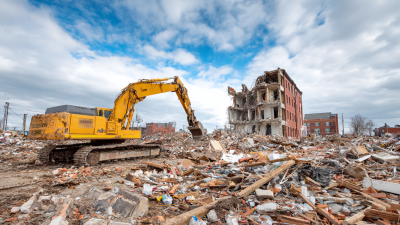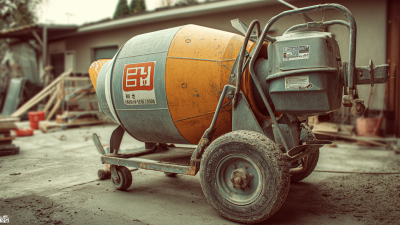The Future of Construction: How Cement Machines are Revolutionizing the Industry
The construction industry is on the brink of a significant transformation, largely driven by advancements in technology and the integration of innovative tools such as the
Cement Machine. As per a report by MarketsandMarkets, the global concrete machinery market is projected to reach
USD 12.9 billion by 2026, growing at a
CAGR of 7.2% during the forecast period. This growth is propelled by the increasing demand for sustainable construction practices and the need for efficiency in project execution.
Cement Machines are at the forefront of this revolution, offering enhanced precision, reduced waste, and faster curing times. Furthermore, studies indicate that the use of advanced machinery can cut costs by
up to 30% while significantly improving safety on job sites. As the industry embraces digitalization and automation,
Cement Machines are poised to redefine not just workflows but also the very nature of construction, paving the way for
smarter and more
sustainable building practices in the future.
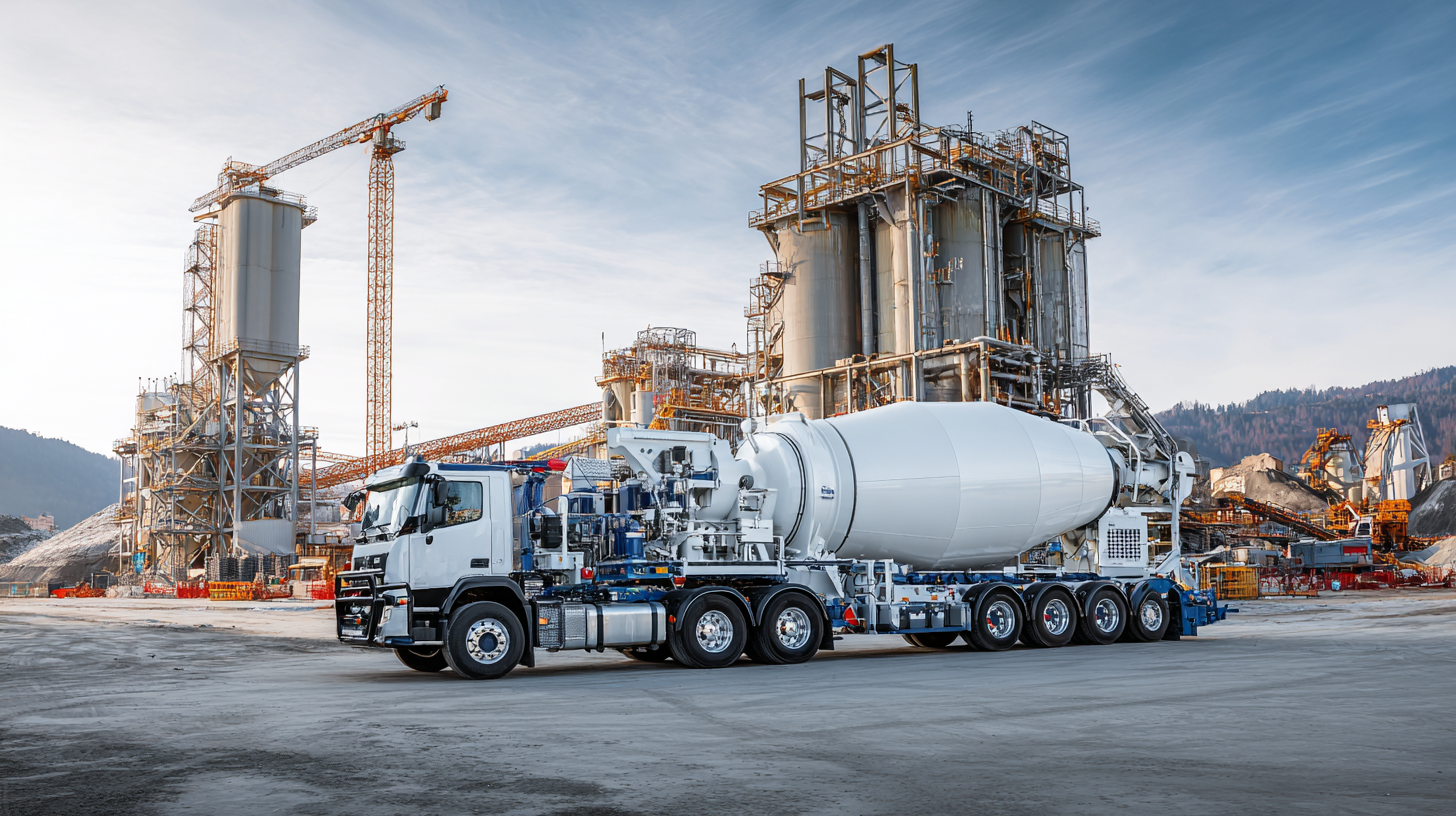
Cement Machines: A Game Changer in Construction Efficiency and Speed
Cement machines are indeed a game changer in the construction industry, significantly enhancing efficiency and speed. Traditional construction methods often involve labor-intensive processes, which can lead to delays and increased costs. However, with the advent of advanced cement machines, projects can be completed faster and with greater precision. These machines automate various stages of cement mixing and application, minimizing human error and streamlining workflow. As a result, construction timelines can be shortened, allowing projects to progress at an unprecedented pace.
Moreover, the integration of technology into cement machinery has led to innovations that further optimize construction efficiency. Modern cement machines are equipped with smart sensors and control systems that monitor conditions in real-time, ensuring consistent quality and performance. This not only improves the durability of structures but also reduces waste, as the machines can precisely measure the required materials. With these advancements, the construction industry is entering a new era where speed, efficiency, and sustainability go hand in hand, fundamentally reshaping how buildings are designed and constructed.
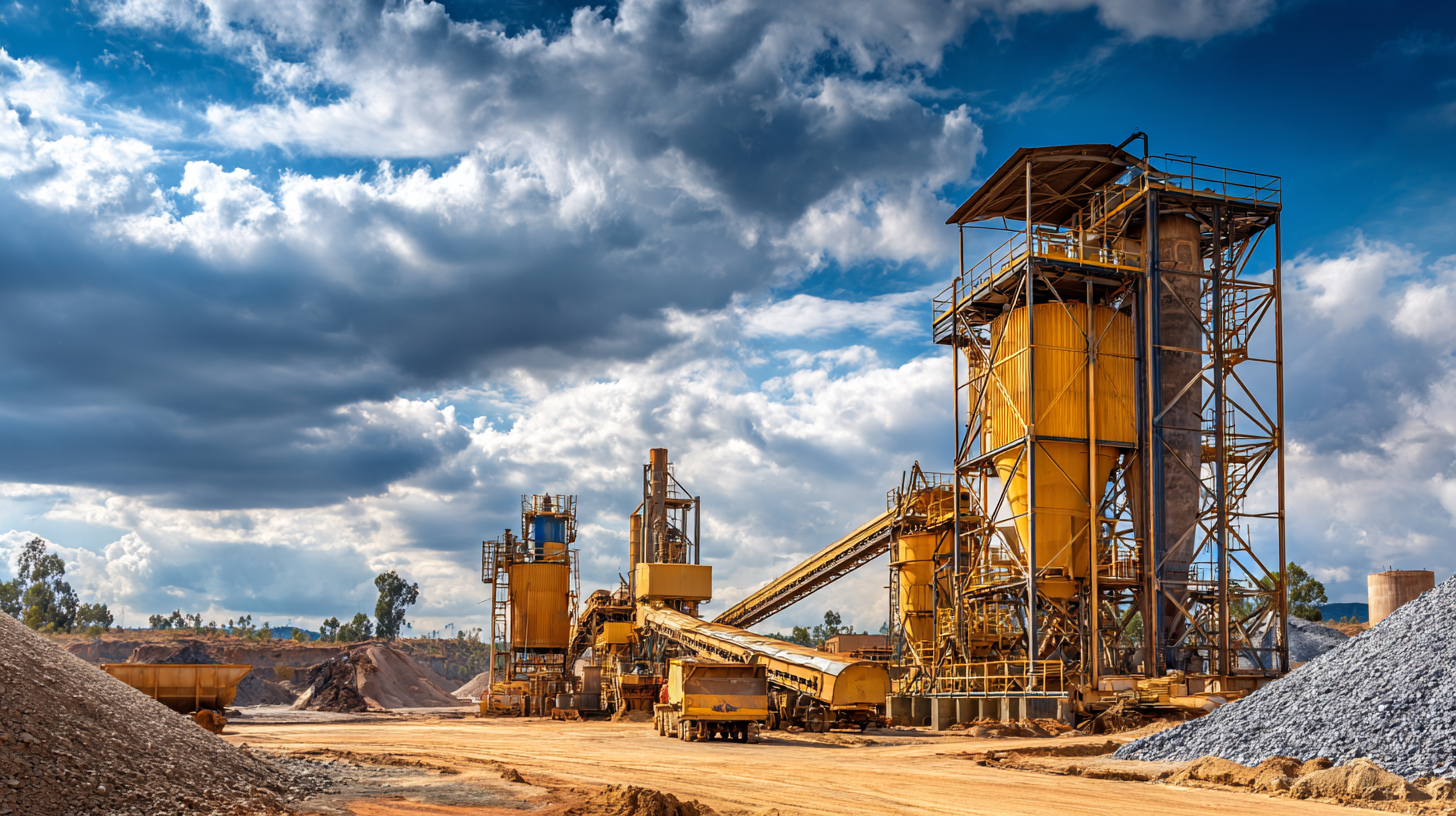
Transforming Construction Sites: The Role of Automation in Cement Machinery
Automation is playing a pivotal role in transforming construction sites, particularly in the realm of cement machinery. With the integration of advanced robotics and artificial intelligence, these machines are now capable of executing complex tasks with minimal human intervention. This shift not only enhances efficiency but also significantly reduces the risk of human error. As a result, construction projects can be completed faster and with greater precision, leading to improved overall quality and safety on site.
Moreover, automated cement machinery can adapt to various project requirements and environmental conditions, making them incredibly versatile. The ability to quickly adjust settings allows for the optimization of resources, including time and material usage. In addition, the implementation of real-time data monitoring enables operators to make informed decisions, ensuring that operations are both effective and sustainable. As the construction industry continues to embrace innovative technology, the impact of automation in cement machinery will likely set new standards for productivity and quality across the sector.
The Future of Construction: Cement Machinery Automation
This chart illustrates the increasing efficiency of construction processes through automation in cement machinery over the years. The data demonstrates a significant improvement in productivity and reduction in labor hours required as advanced technologies are adopted.
Sustainability Innovations: How Cement Machines Reduce Environmental Impact
As the construction industry faces increasing scrutiny over its environmental impact, cement machines are emerging at the forefront of sustainability innovations. These advanced machines are designed to optimize the cement production process, significantly reducing carbon emissions and energy consumption. By integrating smart technologies, such as artificial intelligence and machine learning, modern cement machines enhance efficiency and minimize waste, allowing for a more sustainable approach to construction.
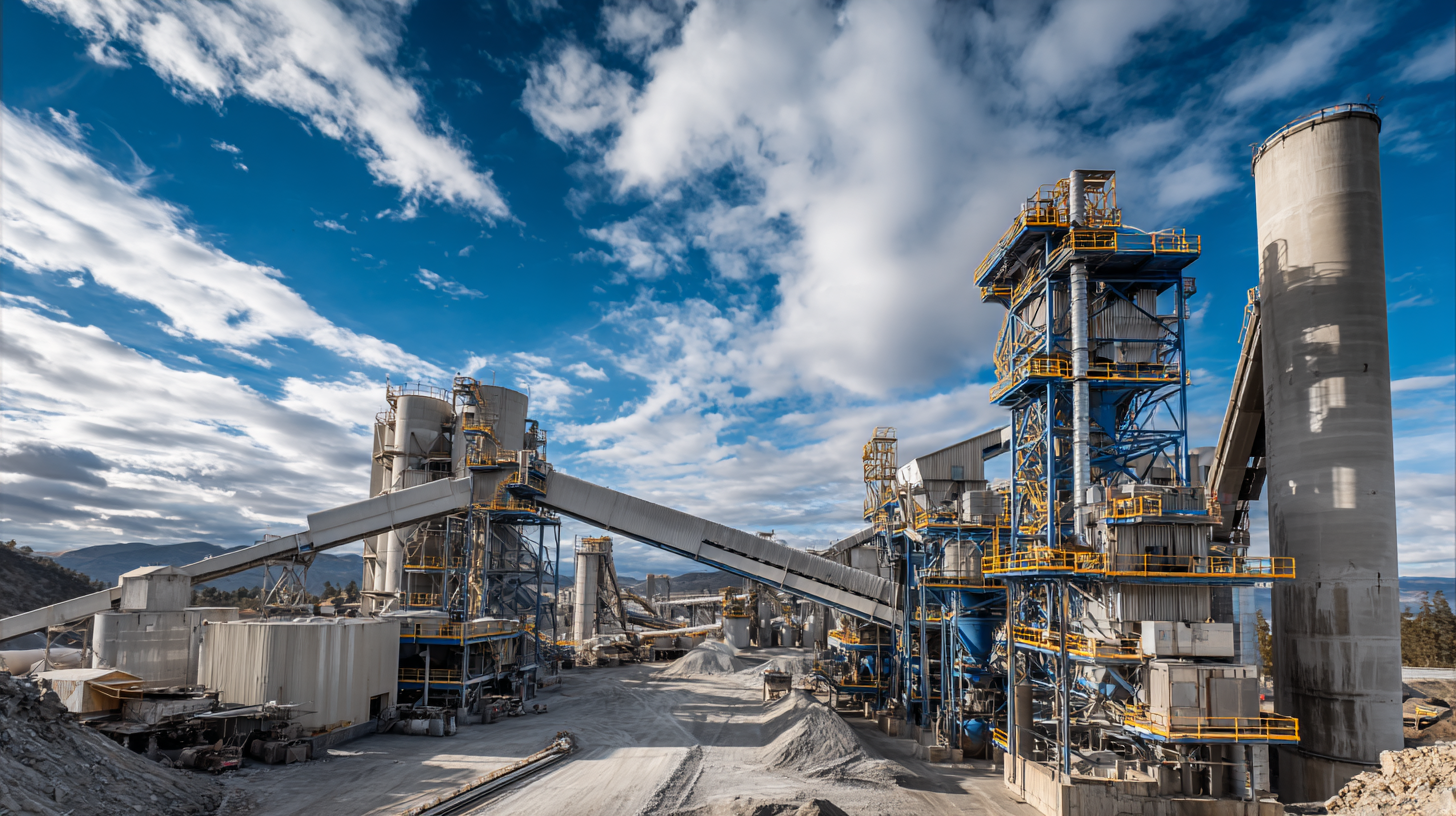
Innovative techniques, like the incorporation of alternative materials and the recycling of industrial by-products, further contribute to the reduction of the environmental footprint. Moreover, advancements in carbon capture and storage technologies are being integrated into cement production processes, enabling the industry to sequester harmful emissions effectively. As these innovations continue to evolve, the potential for cement machines to transform construction practices into an eco-friendly model is immense, paving the way for a more sustainable future in the built environment.
Worker Safety Enhancements Through Advanced Cement Machine Technology
The construction industry has always been challenged by safety concerns, but advancements in cement machine technology are proving to be a game changer. Modern machines are now equipped with features that enhance worker safety, such as automatic shut-off systems and smart sensors that monitor environmental conditions. These innovations are designed to minimize worker exposure to hazardous materials and reduce the likelihood of accidents. Additionally, machines that incorporate robotics and AI can perform dangerous tasks, allowing human workers to focus on oversight and quality assurance.
Tips for ensuring safety on construction sites with advanced cement machines include regularly scheduled maintenance to ensure machines remain in optimal working condition. Training workers on the latest technologies is also crucial; they must understand how to operate new machines and recognize their safety features. Finally, creating a culture of safety that encourages communication among team members can significantly enhance overall site safety and efficiency. By leveraging advanced technology, the construction industry stands to protect its workforce while increasing productivity and project outcomes.
Future Trends: Predicting the Next Innovations in Cement Machinery for Construction
The construction industry is on the brink of a revolution, driven by advancements in cement machinery that promise to redefine traditional building processes. According to a 2022 report by McKinsey & Company, the adoption of automation in construction could enhance efficiency by 20-25% over the next decade. One of the most significant transformations is the integration of smart cement mixing technologies that improve precision and reduce waste, allowing for sustainable construction practices. These innovations not only optimize material usage but also contribute to lower carbon footprints, aligning with global sustainability goals.
Tips: To stay ahead in the evolving construction landscape, companies should consider investing in training for their workforce to effectively use new cement machinery. Embracing continuous learning will equip employees with the skills necessary to maximize the benefits of these technologies.
Furthermore, predictive analytics are emerging as a game changer in cement machinery, enabling firms to forecast material needs and optimize supply chains. A study by Deloitte suggests that businesses leveraging data-driven insights are likely to experience a 15% reduction in operational costs. Adapting to these technological trends will be essential as the industry pivots towards a more efficient, data-informed future.
Tips: Keep an eye on industry partnerships that focus on research and development in cement technology, as collaborations often lead to the fastest adoption of innovative solutions.

Home
About Us
Products
 Concrete Mixing Plant
Concrete Mixing Plant
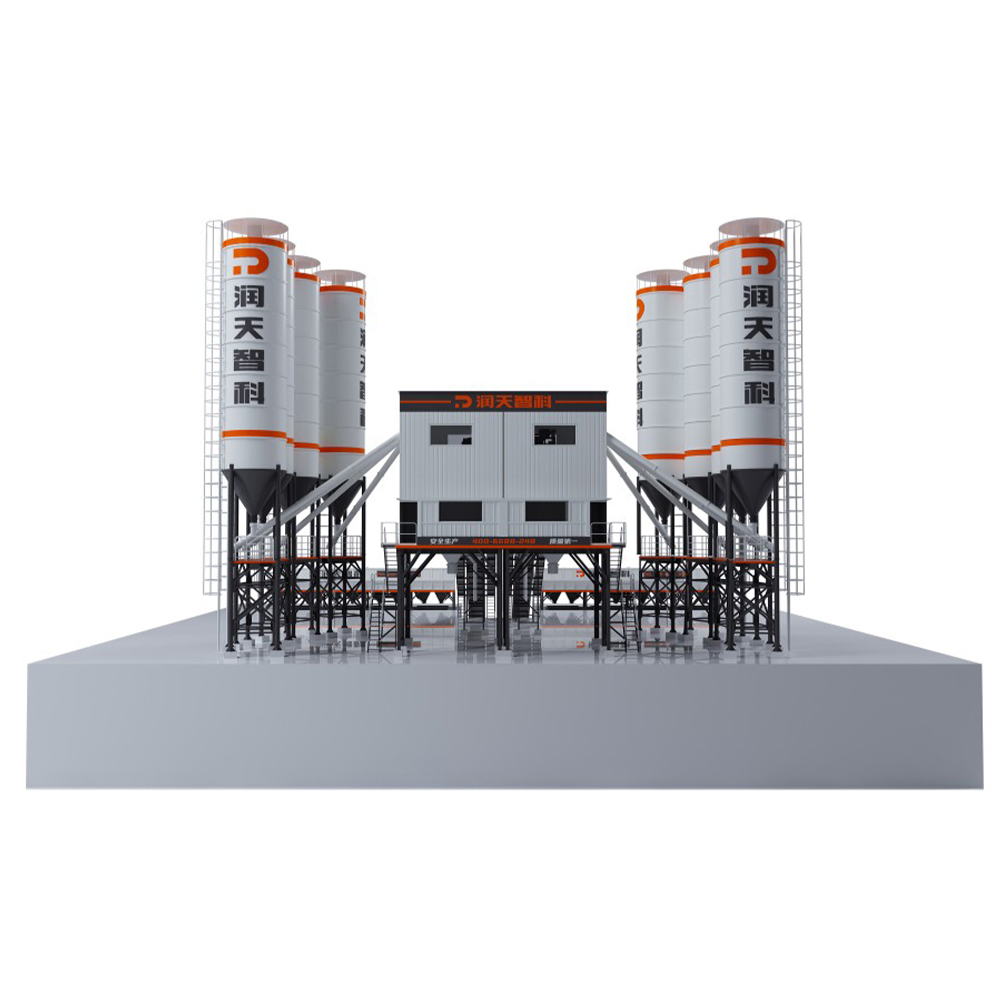 HZS Series Belt Concrete Mixing Plant
HZS Series Belt Concrete Mixing Plant
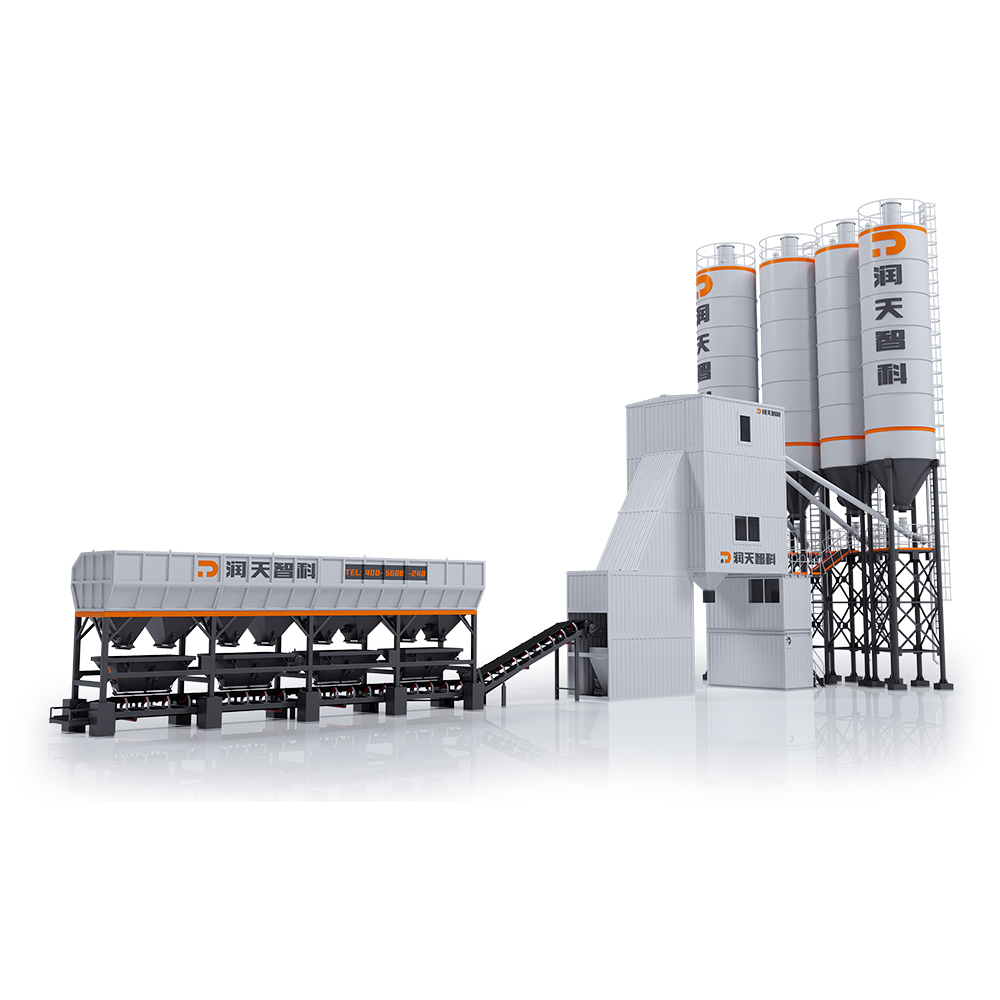 HZS Series Bucket-Lifting Type Container Concrete Mixing Plant
HZS Series Bucket-Lifting Type Container Concrete Mixing Plant
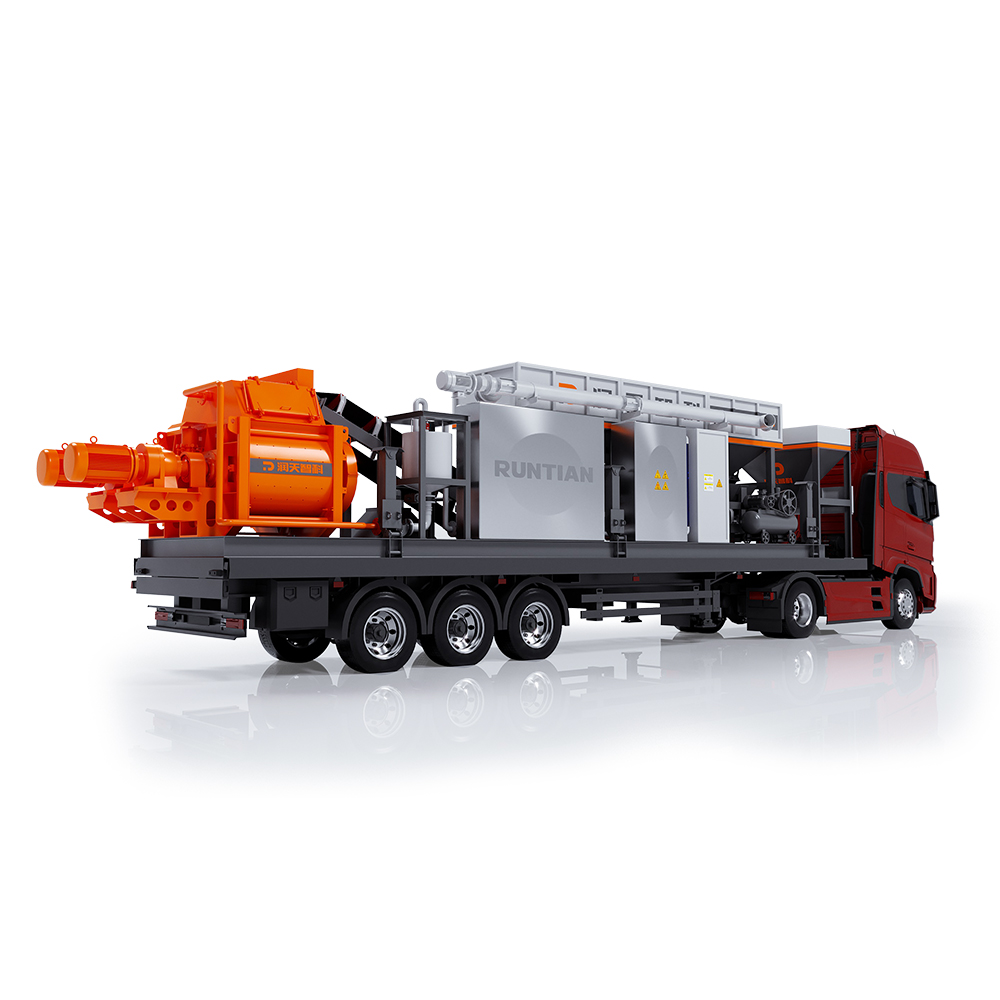 HZS60 Mobile Concrete Mixing Plant
HZS60 Mobile Concrete Mixing Plant
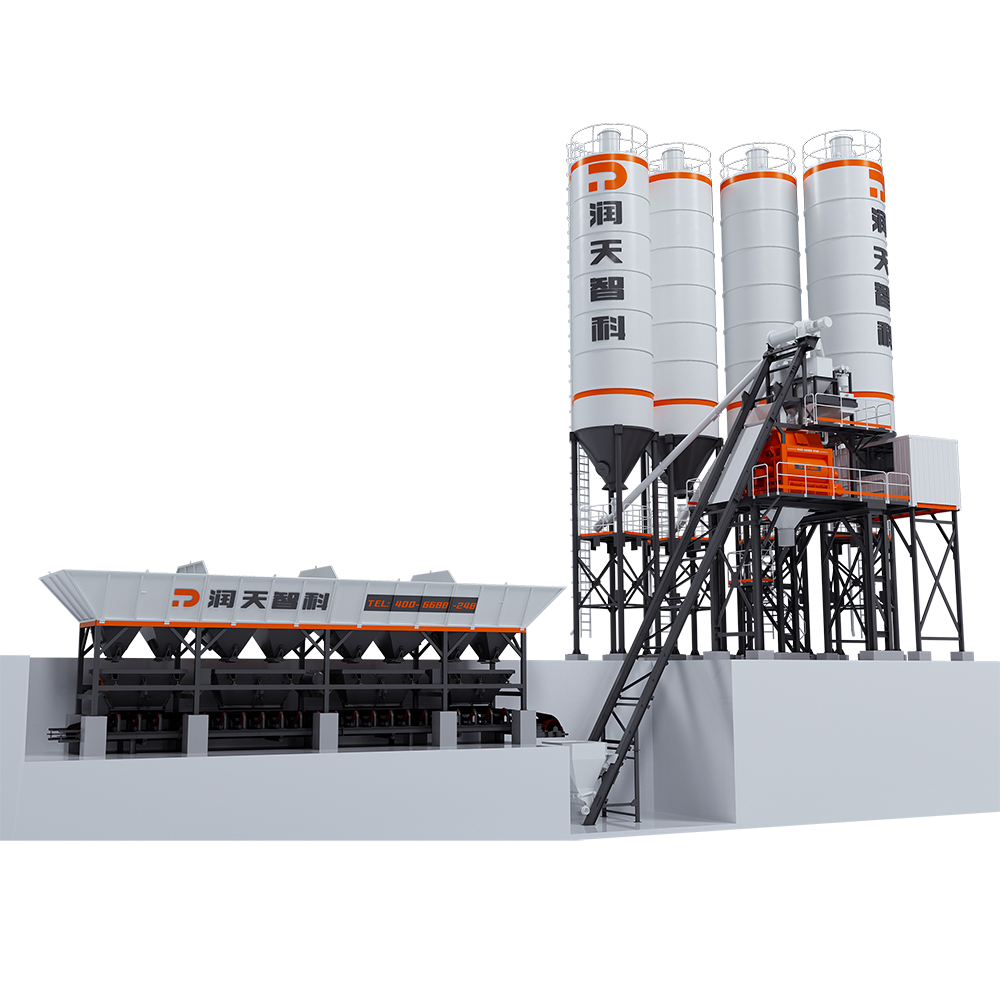 HZS Series Bucket-Lifting Type Concrete Mixing Plant
HZS Series Bucket-Lifting Type Concrete Mixing Plant
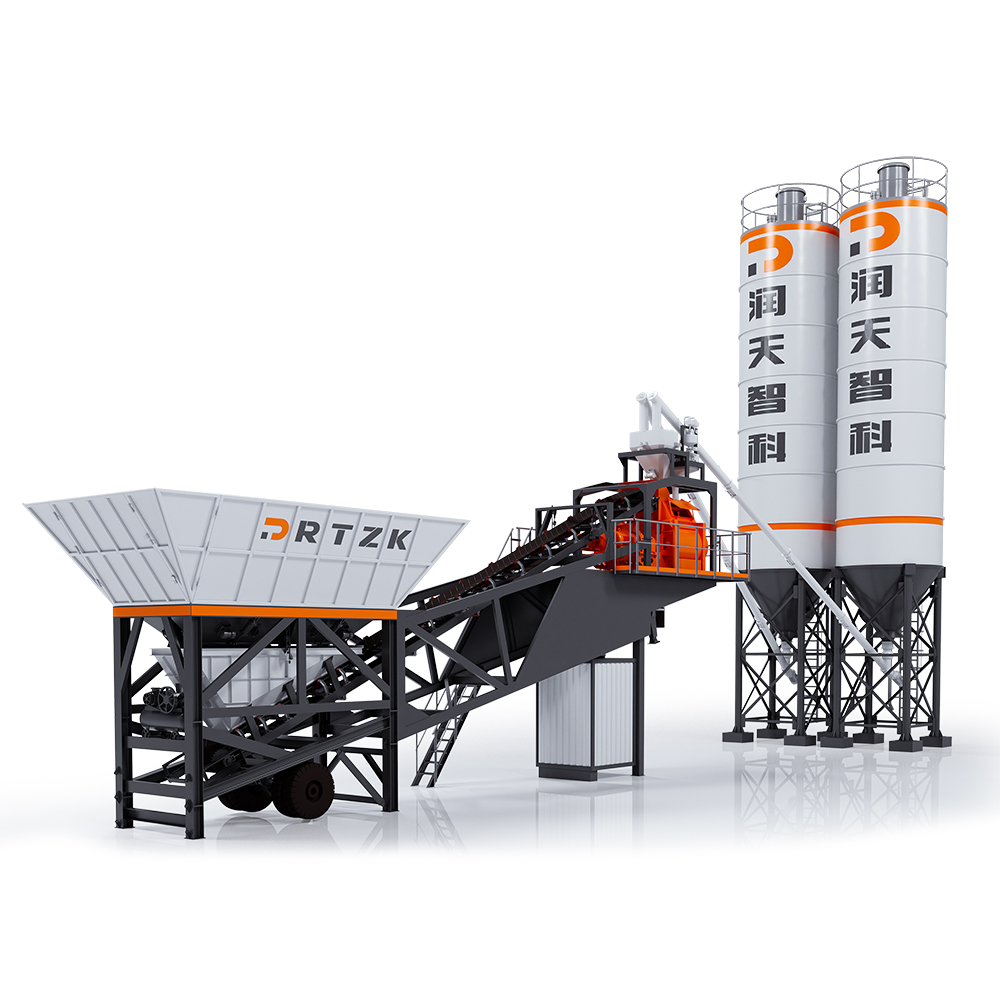 HZS Series Mobile Concrete Mixing Plant
HZS Series Mobile Concrete Mixing Plant
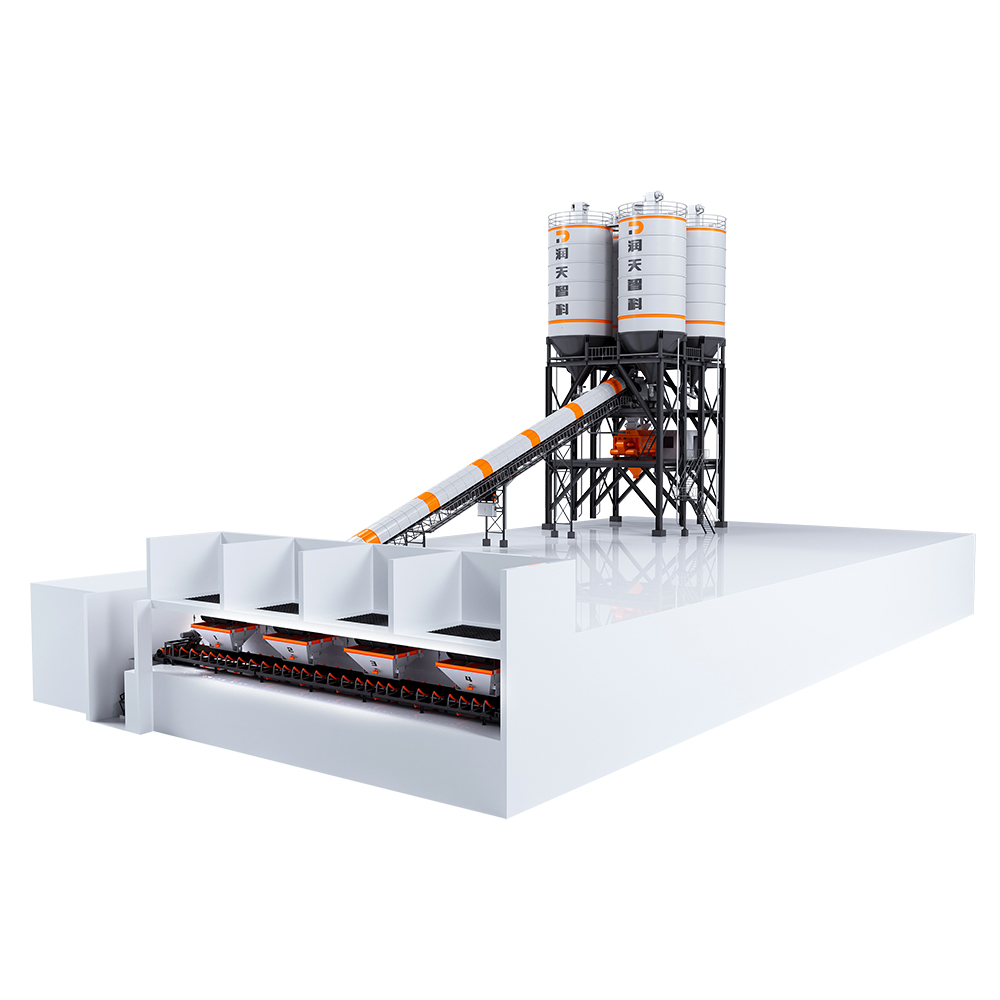 HZS Series Top-Mounted Concrete Mixing plant
HZS Series Top-Mounted Concrete Mixing plant
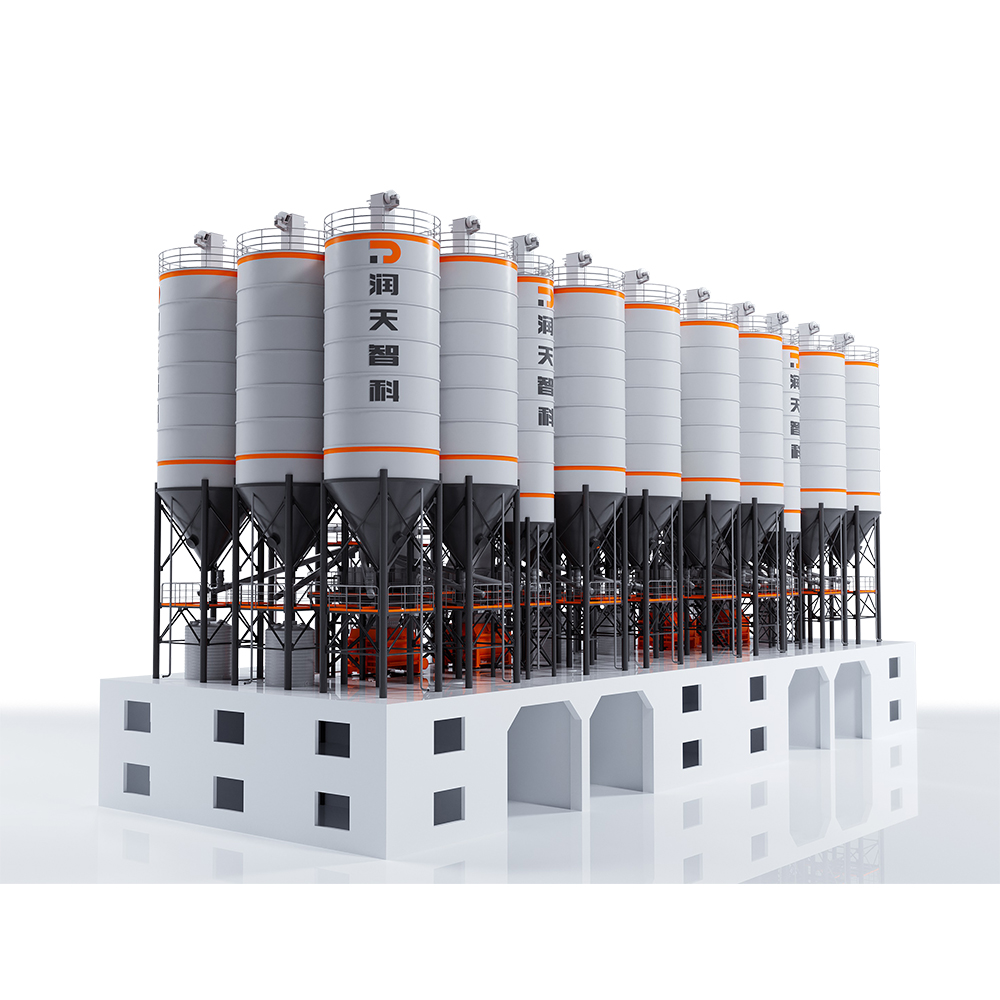 HZS Series Semi-Top Mounted Concrete Mixing Plant
HZS Series Semi-Top Mounted Concrete Mixing Plant
 Stabilized Soil Mixing Plant
Stabilized Soil Mixing Plant
 Asphalt Mixing Plant
Asphalt Mixing Plant
 Sand & Gravel Crushing and Screening Plant
Sand & Gravel Crushing and Screening Plant
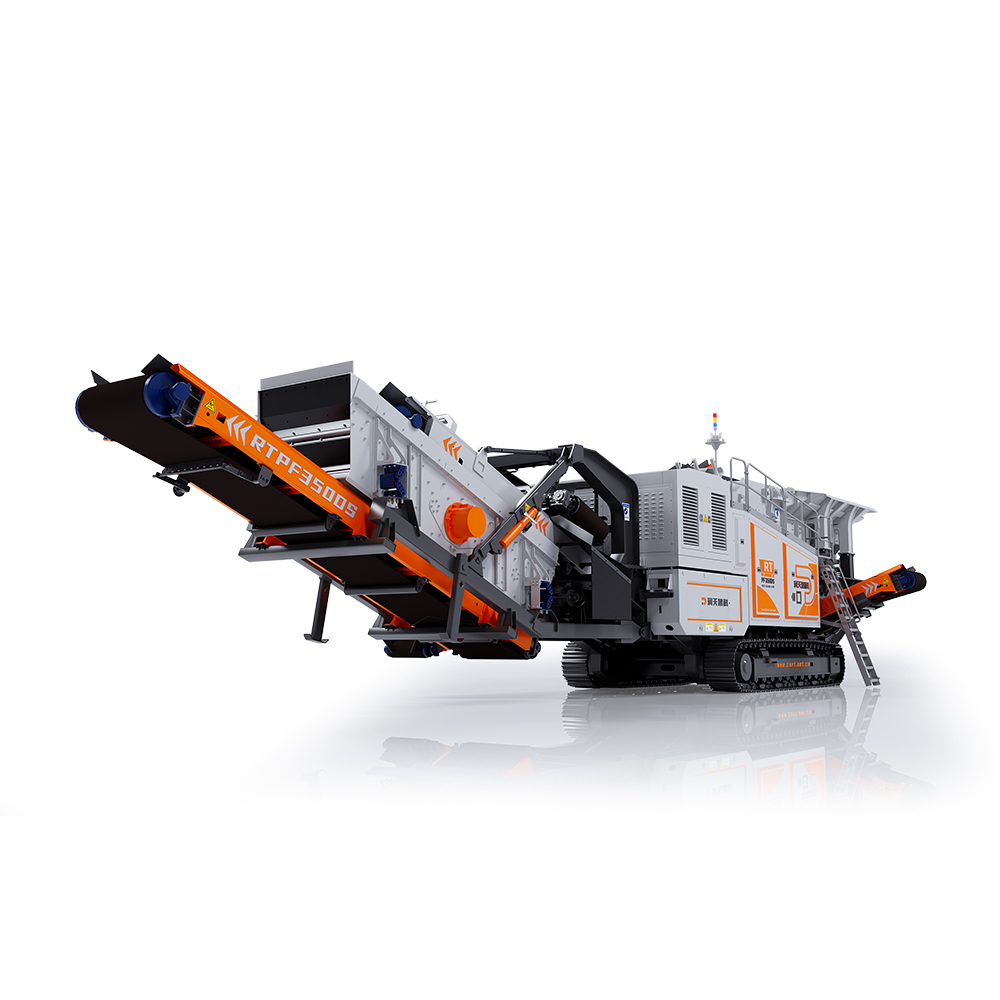 RTPF350DS Crawler Mobile Impact Crushing Plant
RTPF350DS Crawler Mobile Impact Crushing Plant
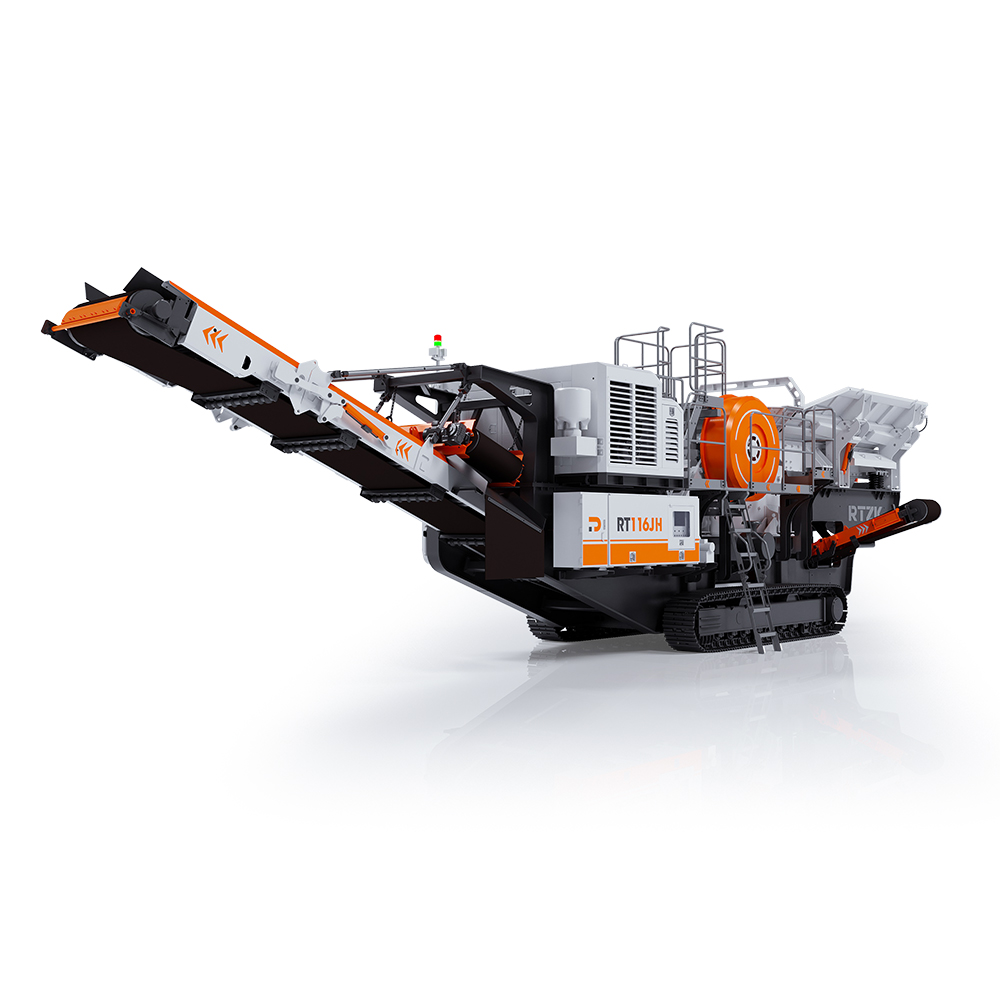 RT116JH Crawler Mobile Jaw Crushing Plant
RT116JH Crawler Mobile Jaw Crushing Plant
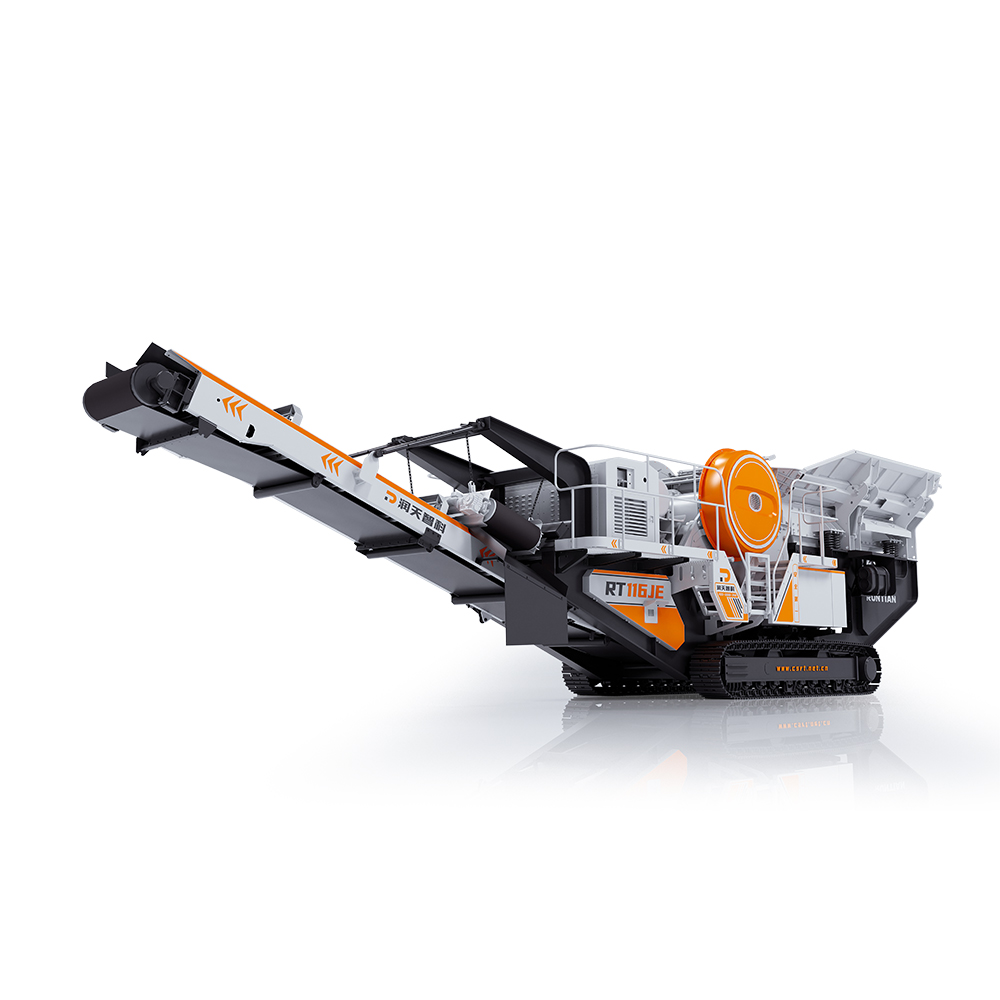 RT116JE Crawler Mobile Jaw Crushing Plant
RT116JE Crawler Mobile Jaw Crushing Plant
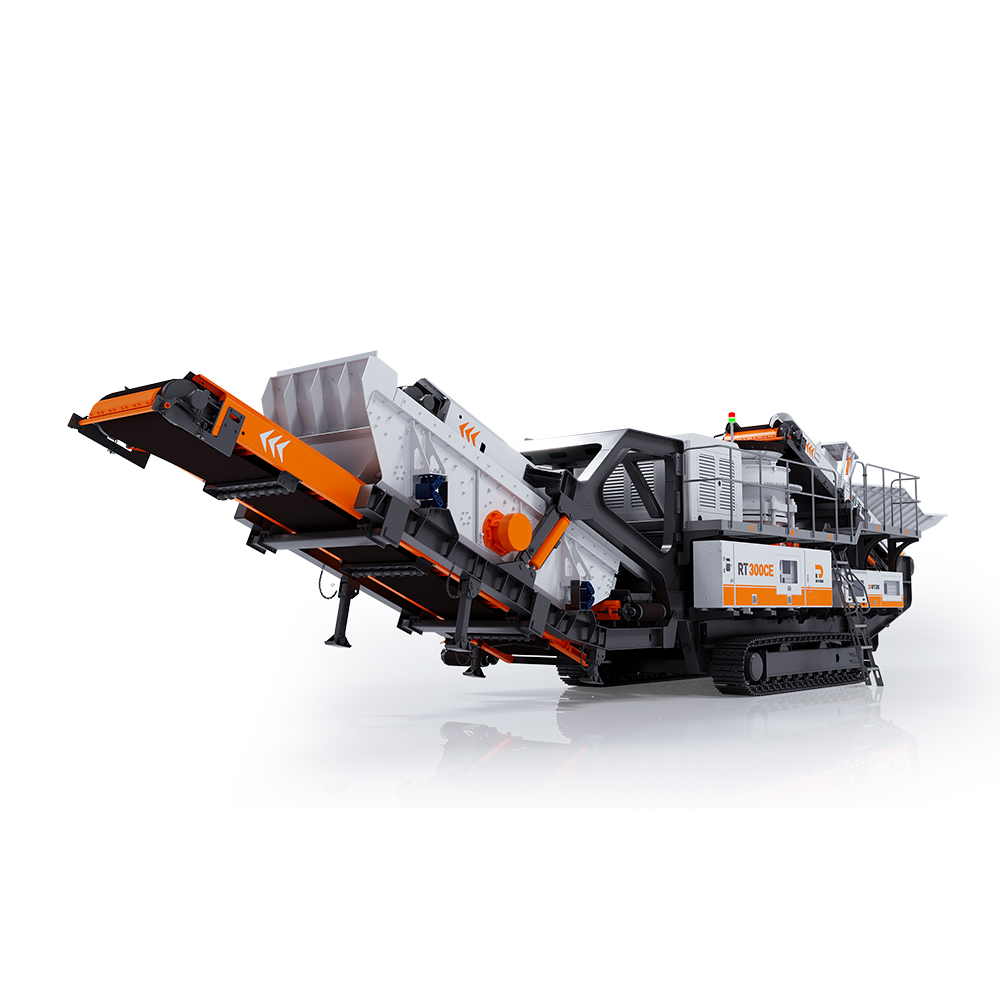 RT300CE Crawler Mobile Cone Crushing Plant
RT300CE Crawler Mobile Cone Crushing Plant
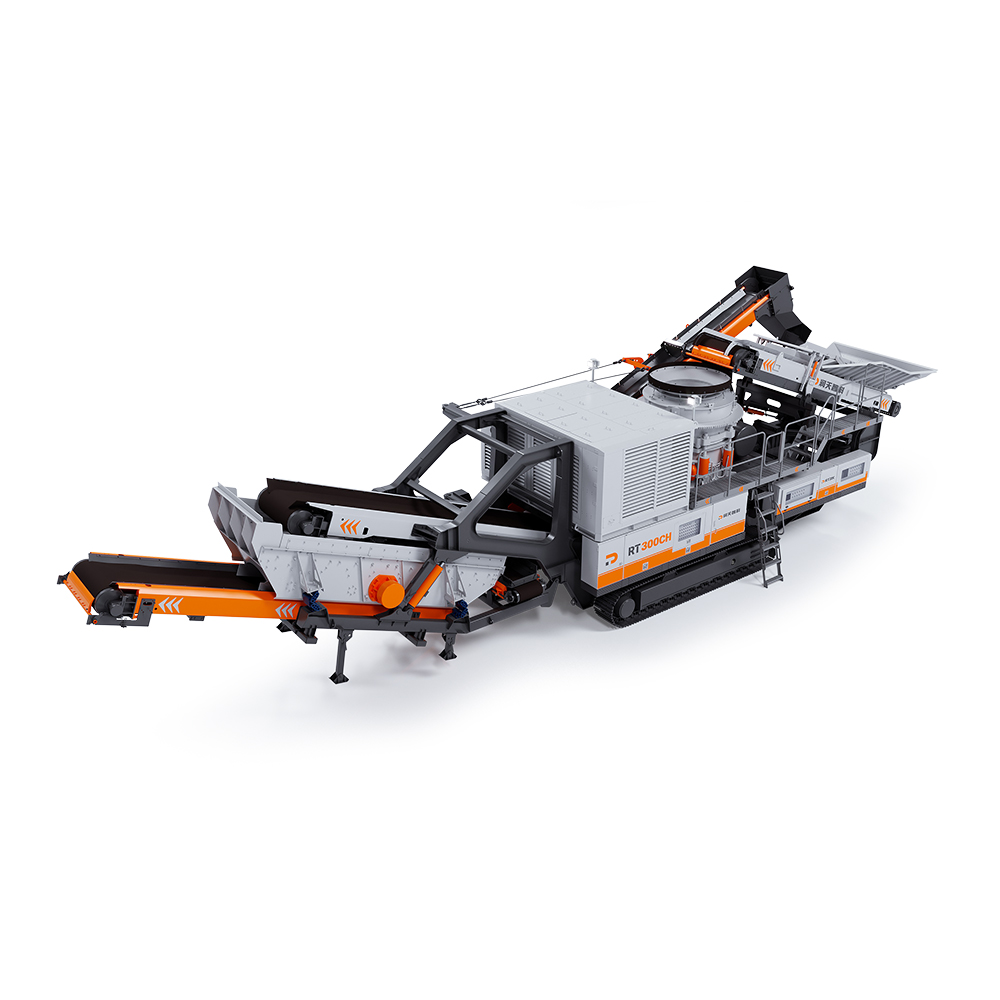 RT300CH Crawler Mobile Cone Crushing Plant
RT300CH Crawler Mobile Cone Crushing Plant
 RT5015H Mobile Scalping Screen
RT5015H Mobile Scalping Screen
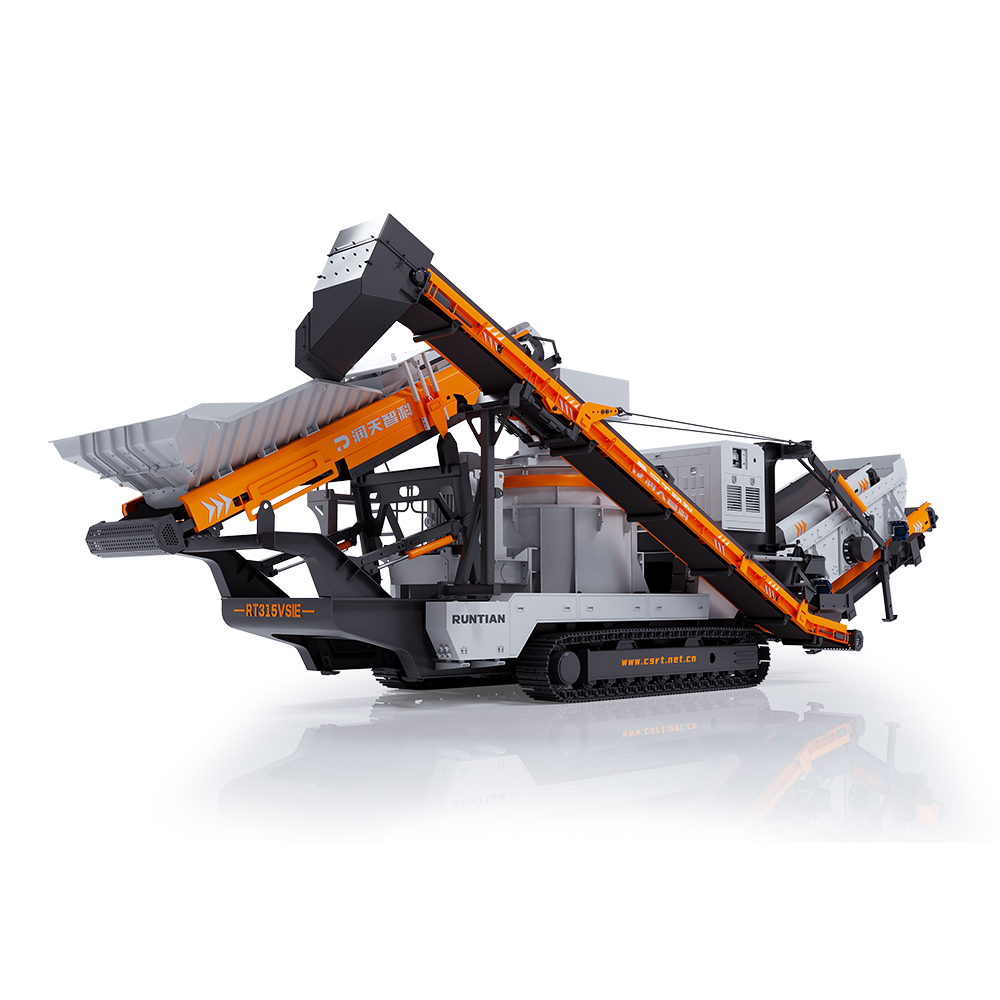 RT315VSIE Crawler Mobile Sand Maker
RT315VSIE Crawler Mobile Sand Maker
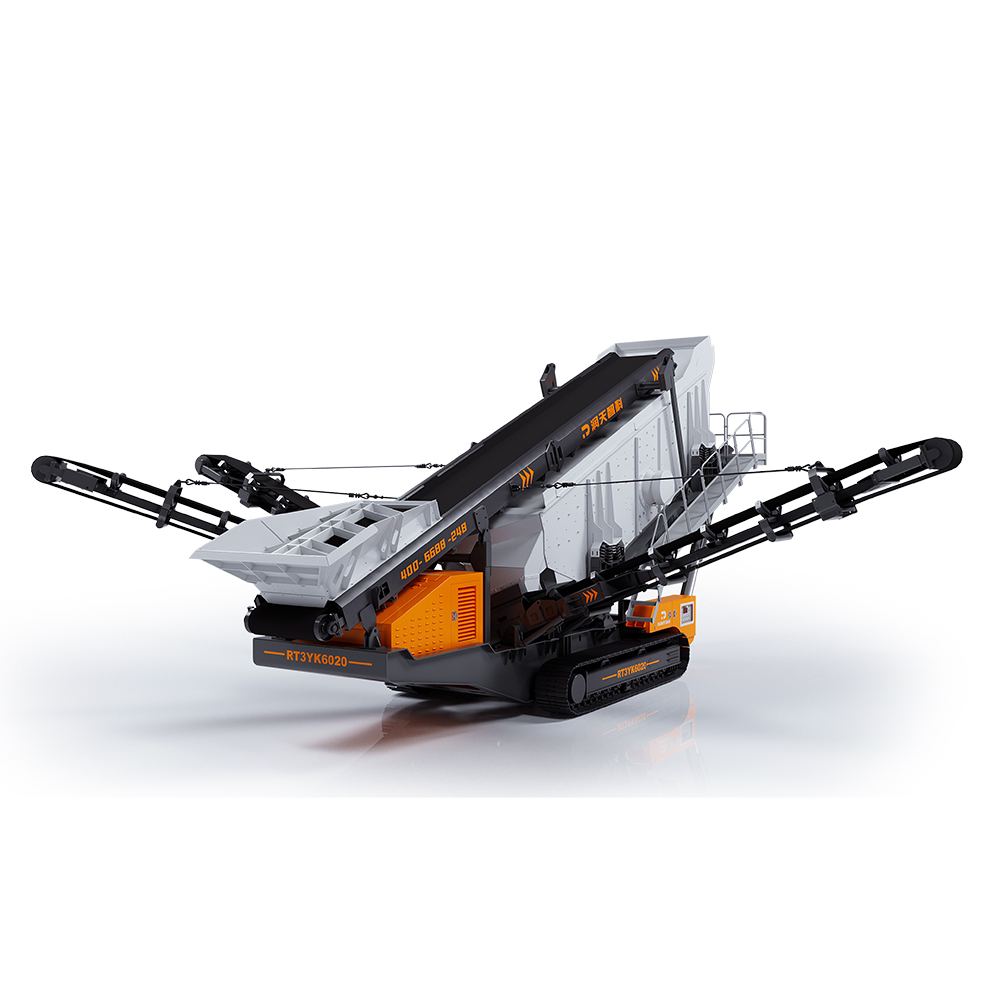 RT3YK6020 Crawler Mobile Screening Plant
RT3YK6020 Crawler Mobile Screening Plant
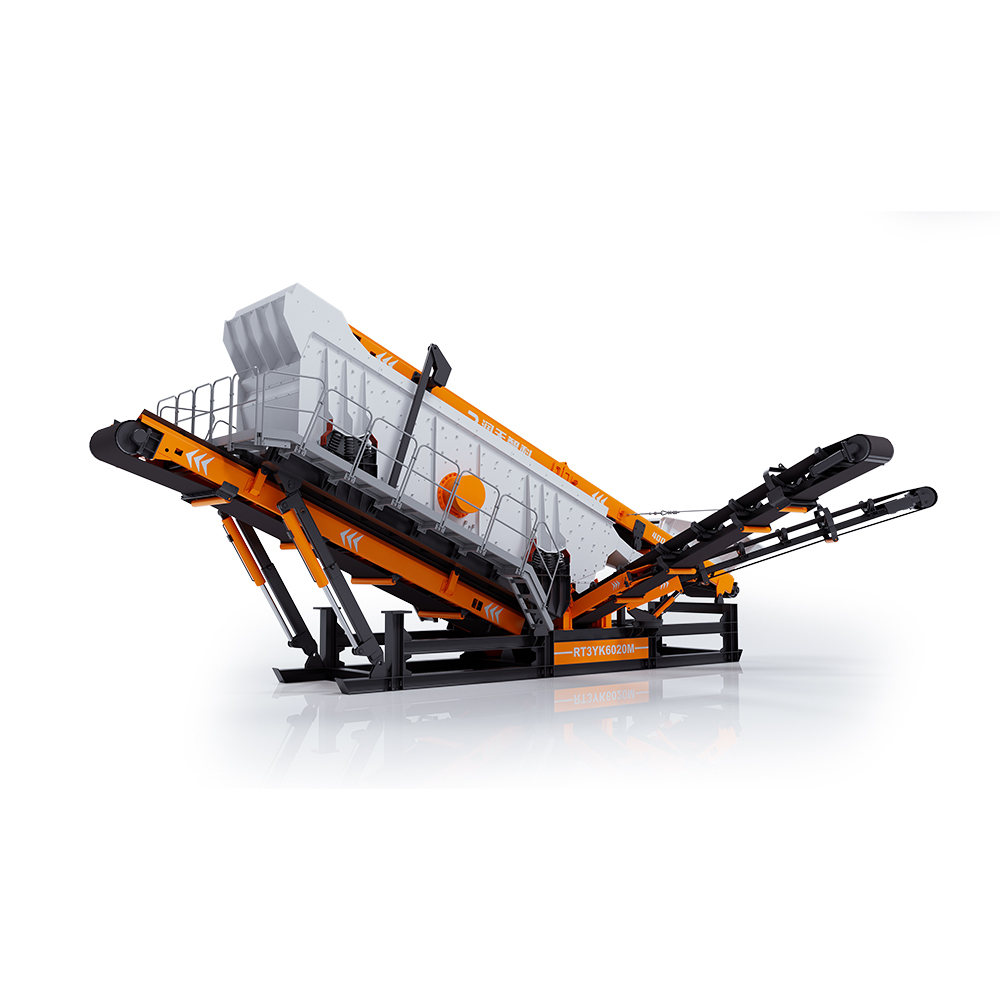 RT3YK6020M Modular Screening Plant
RT3YK6020M Modular Screening Plant
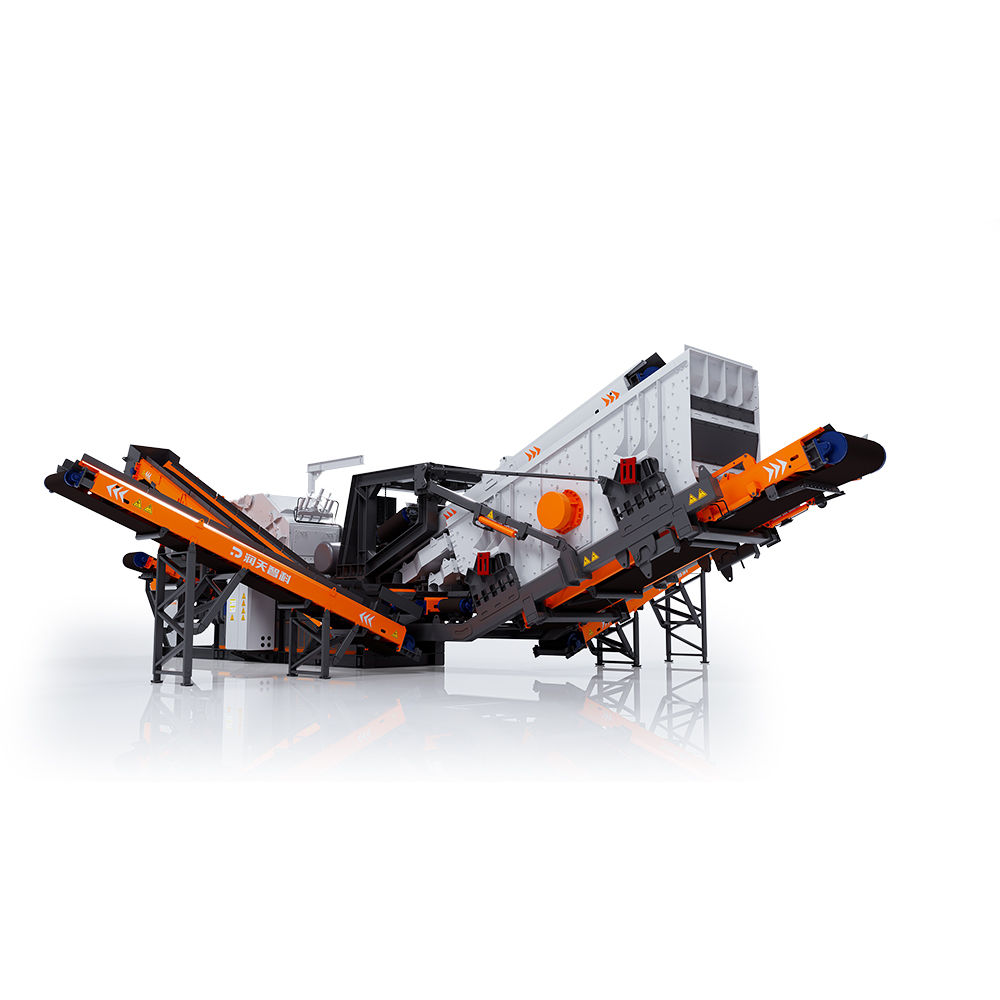 RTF260M Modular Counterattack Crushing and Screening Integrated Machine
RTF260M Modular Counterattack Crushing and Screening Integrated Machine
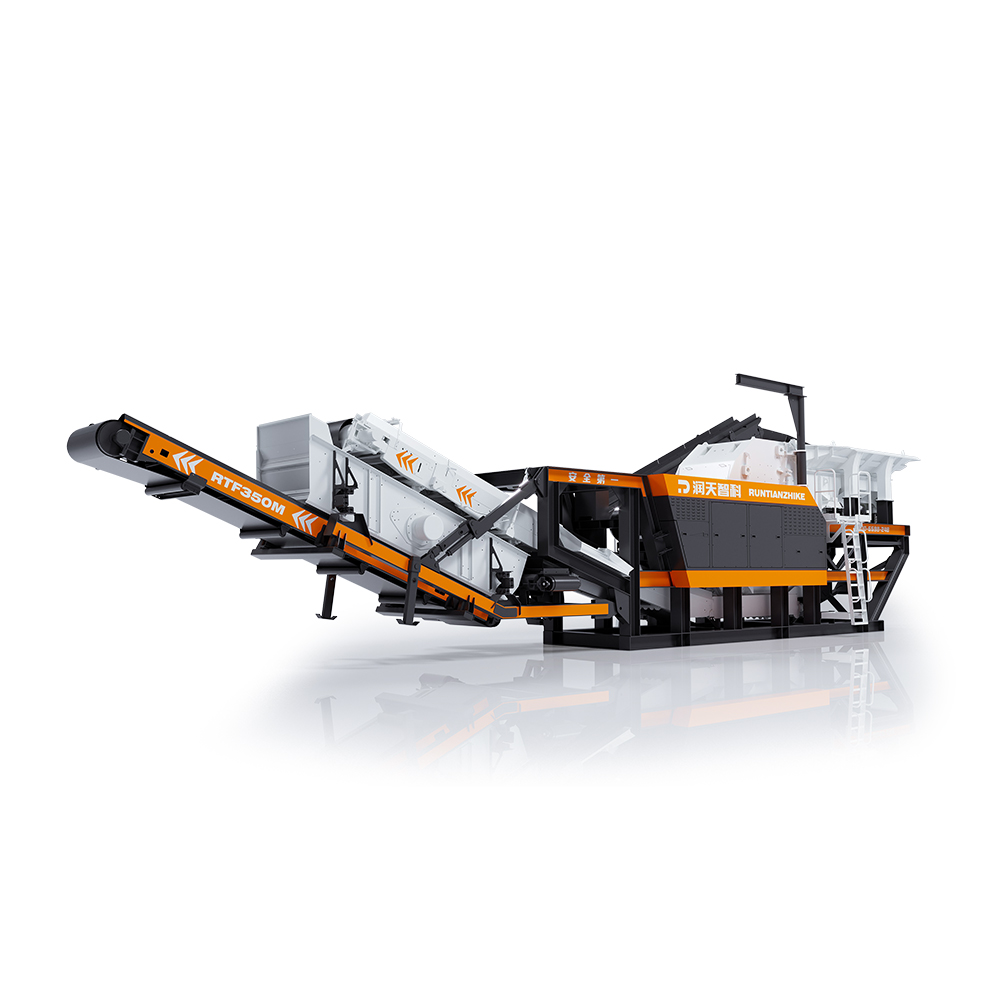 RTF350M Modular Impact Crushing Plant
RTF350M Modular Impact Crushing Plant
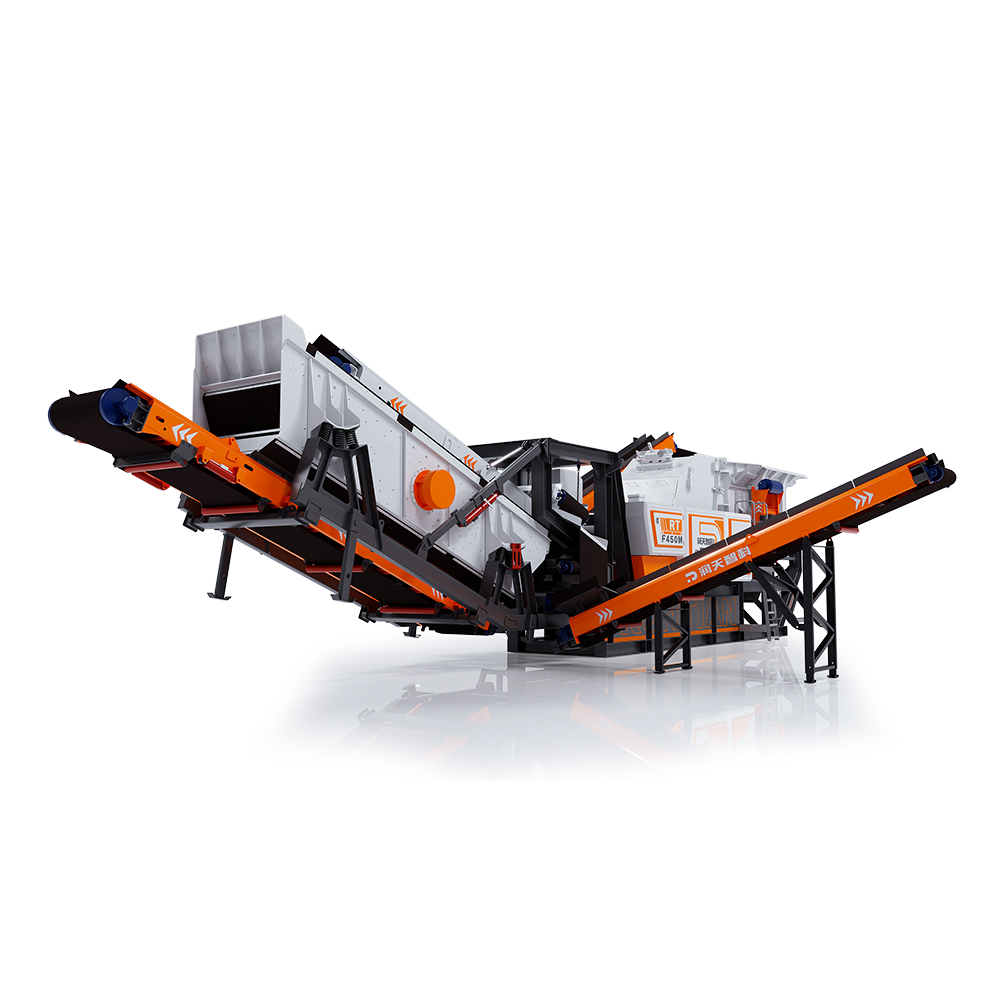 RTF450M Modular Impact Crushing Plant
RTF450M Modular Impact Crushing Plant
 Construction Waste Resourceful Treatment Line
Construction Waste Resourceful Treatment Line
Performances
Video
News
Blog
Contact Us
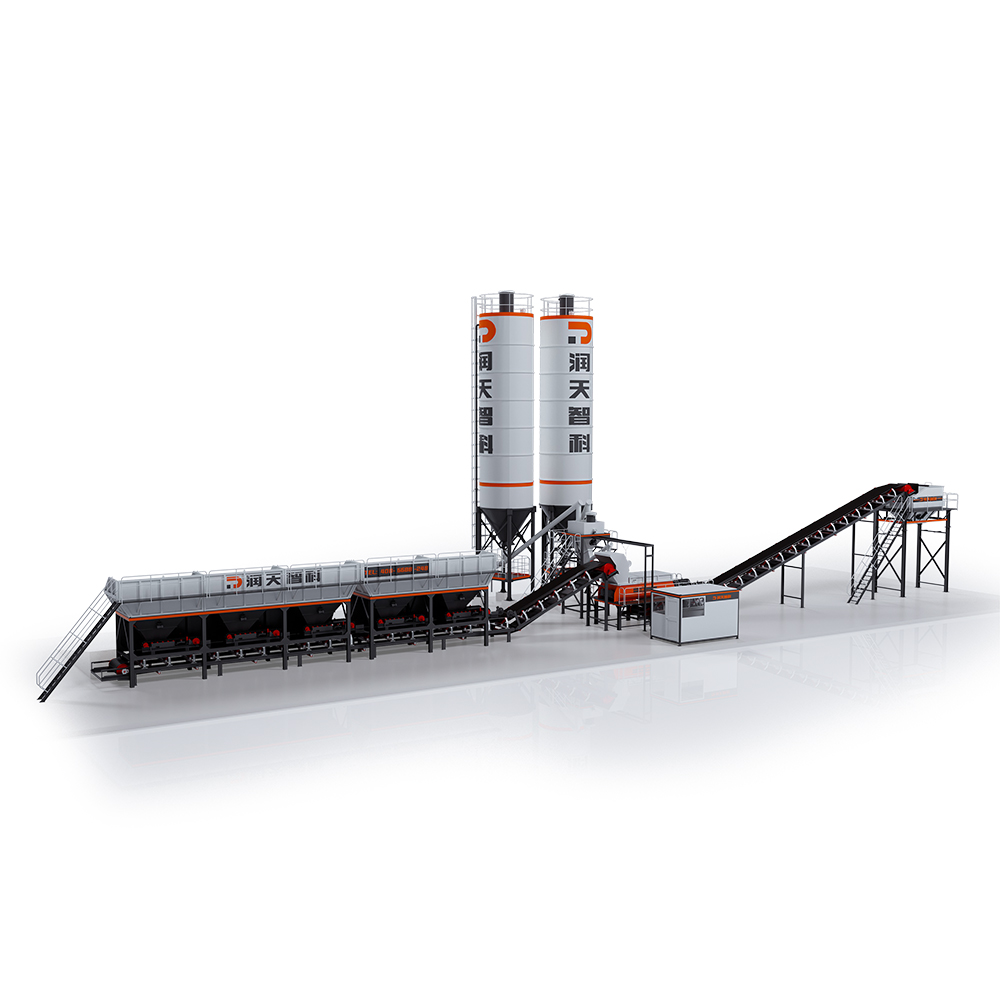 WDB Series Foundation-Free Stability Soil Mixing Plant
WDB Series Foundation-Free Stability Soil Mixing Plant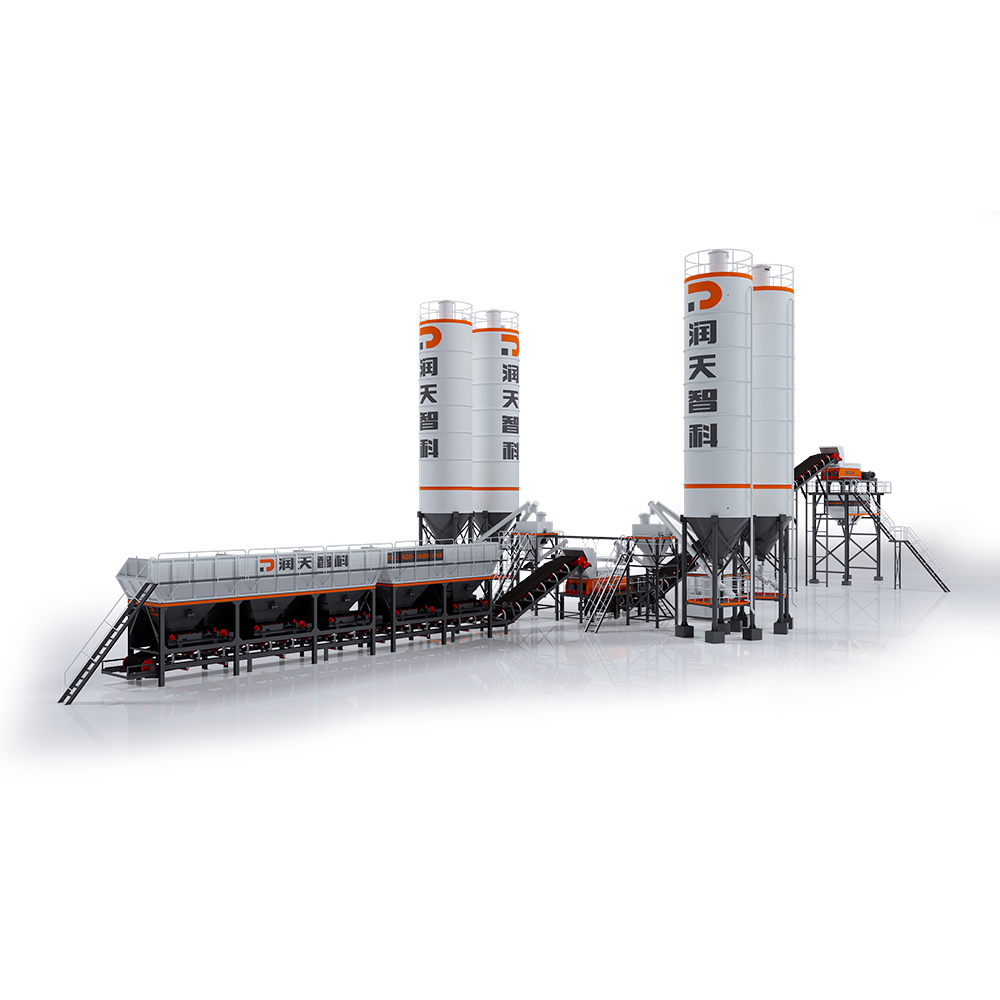 LCB Series Emulsified Asphalt Cold Regeneration Secondary Mixing Plant
LCB Series Emulsified Asphalt Cold Regeneration Secondary Mixing Plant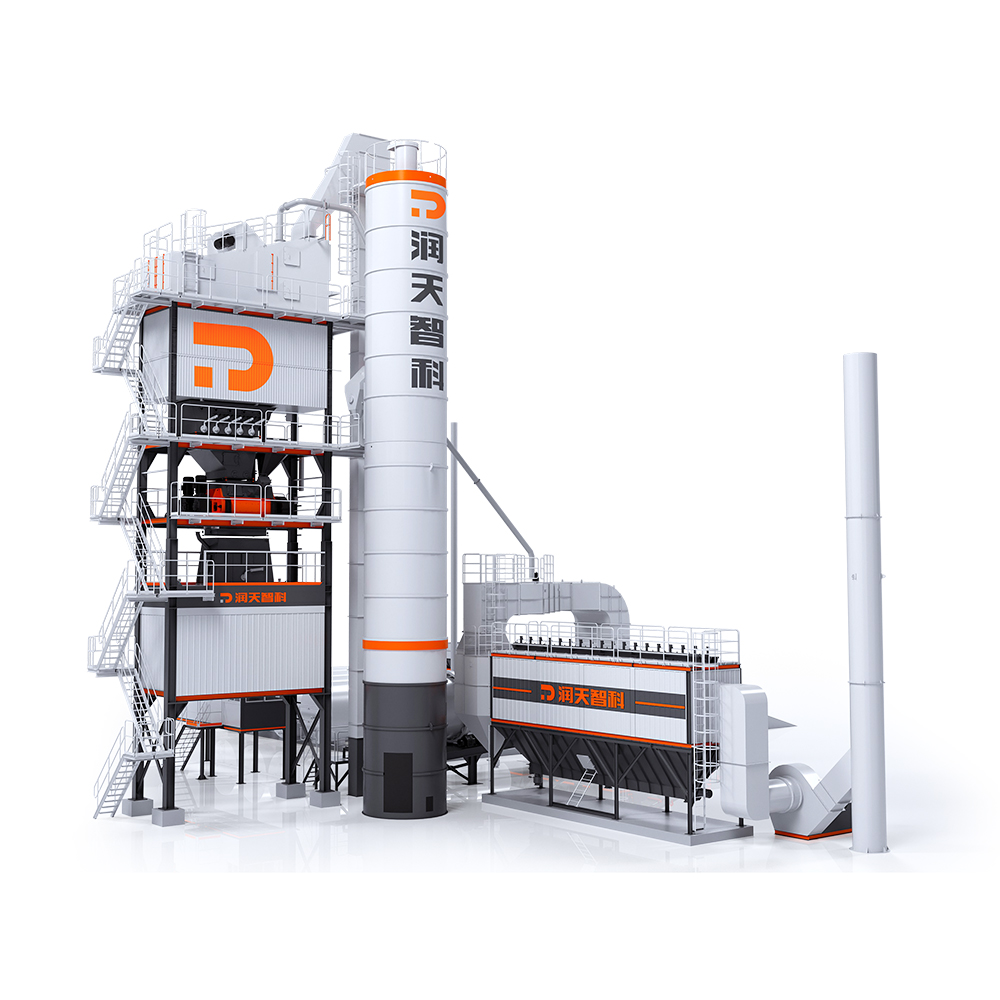 LB Series Asphalt Mixing Plant
LB Series Asphalt Mixing Plant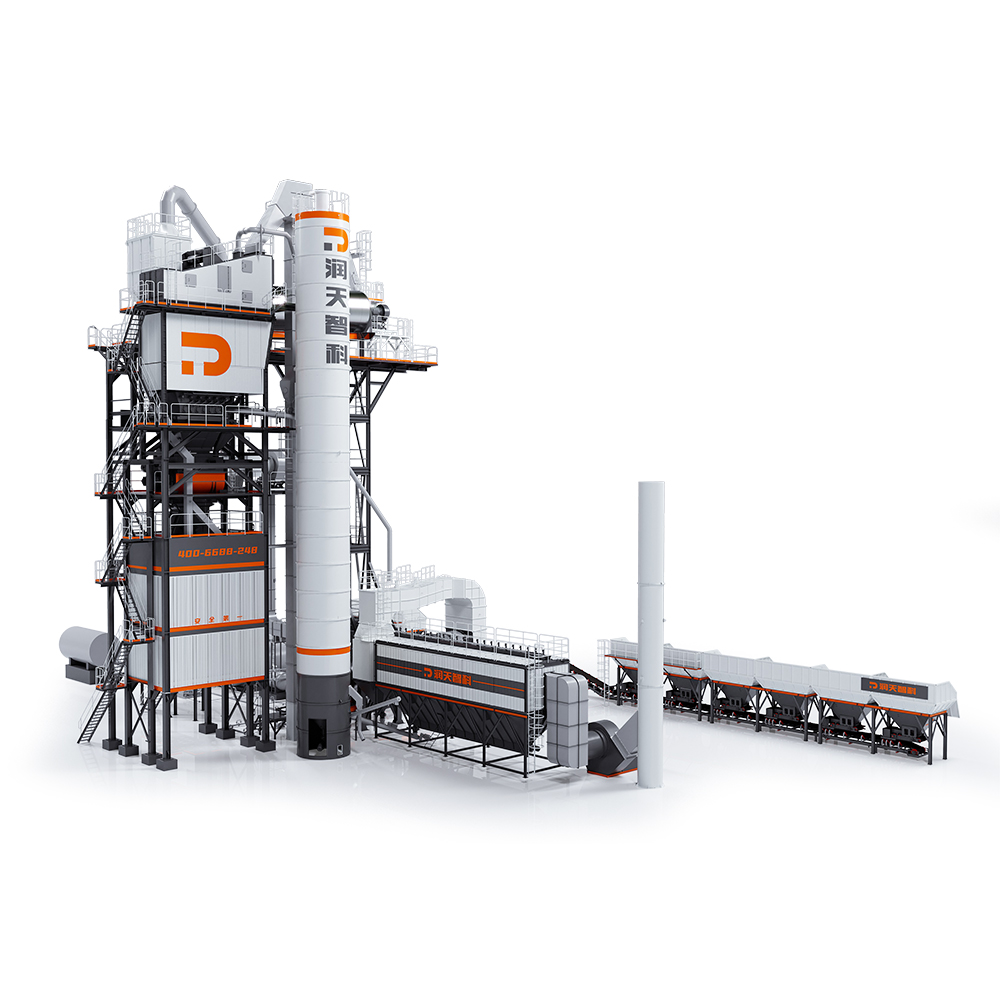 LBR Series Integrated Asphalt Mixing Plant
LBR Series Integrated Asphalt Mixing Plant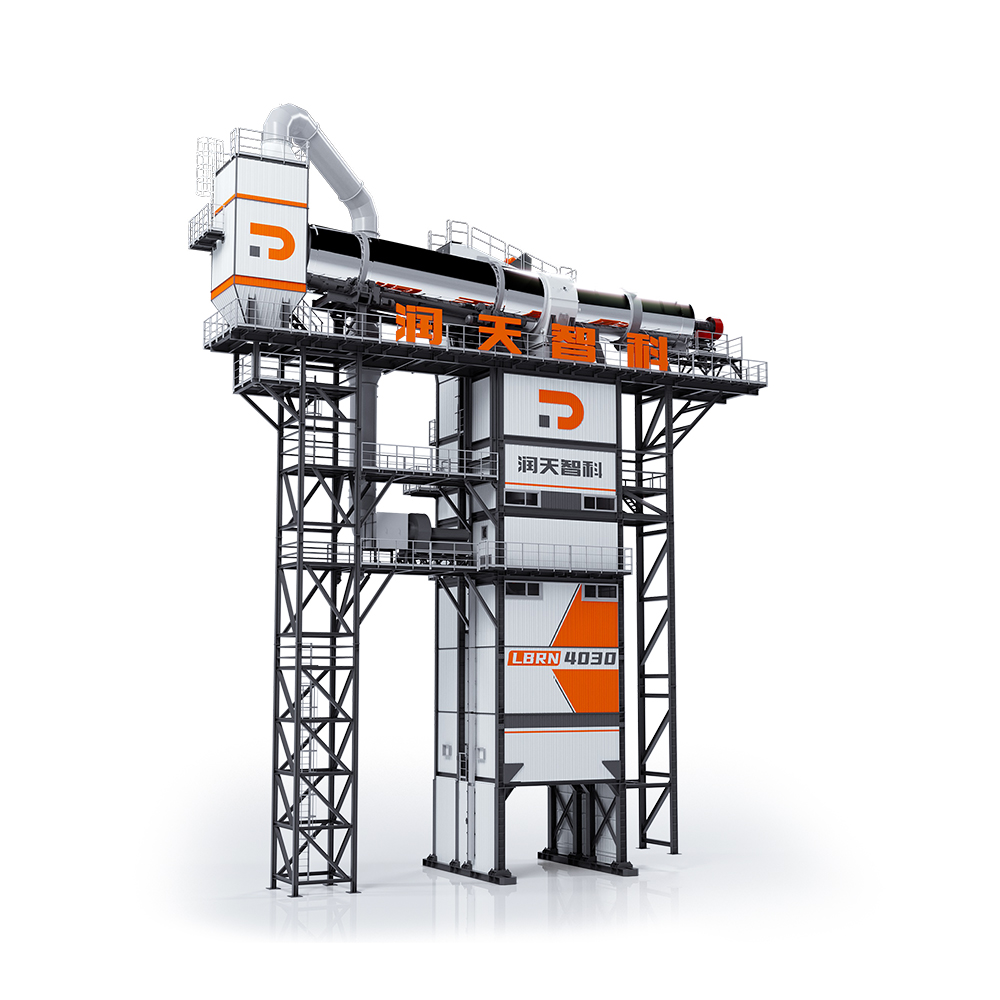 LBRN Series Counterflow Integral Asphalt Mixing Plant
LBRN Series Counterflow Integral Asphalt Mixing Plant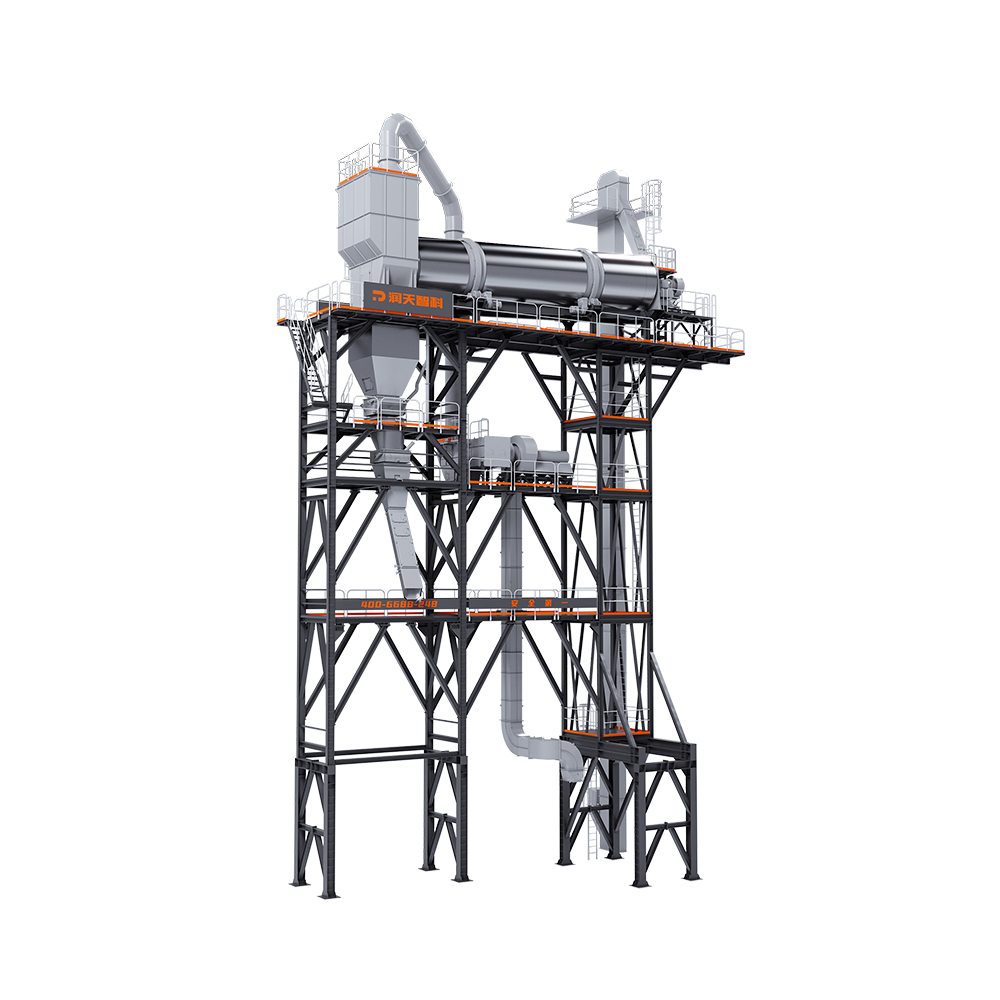 RZS Series Asphalt Mixing Plant
RZS Series Asphalt Mixing Plant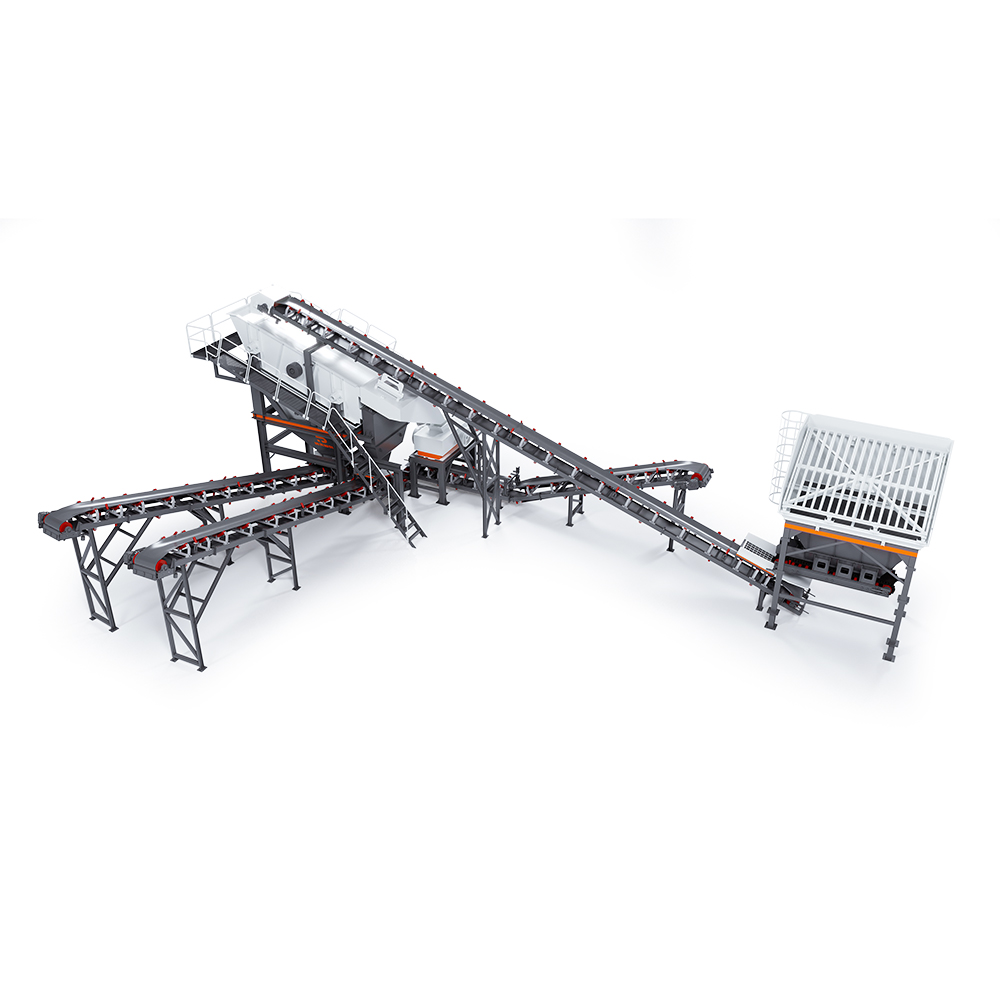 RTZS120 Series RAP Crushing & Screening Plant
RTZS120 Series RAP Crushing & Screening Plant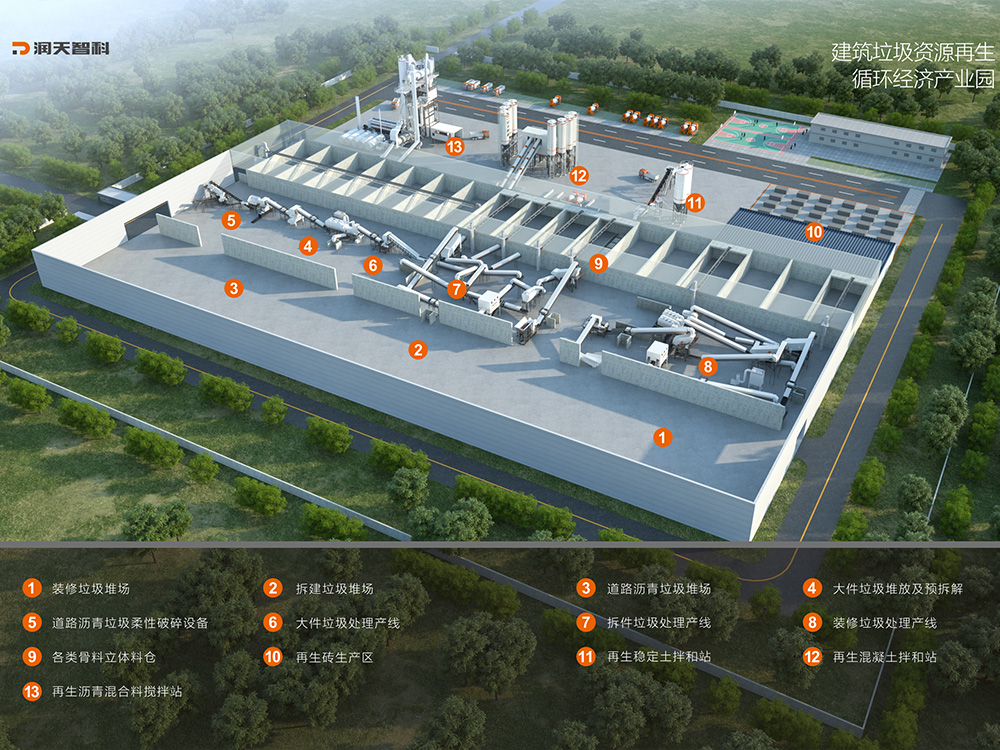 Construction Waste Resourceful Treatment Line
Construction Waste Resourceful Treatment Line





